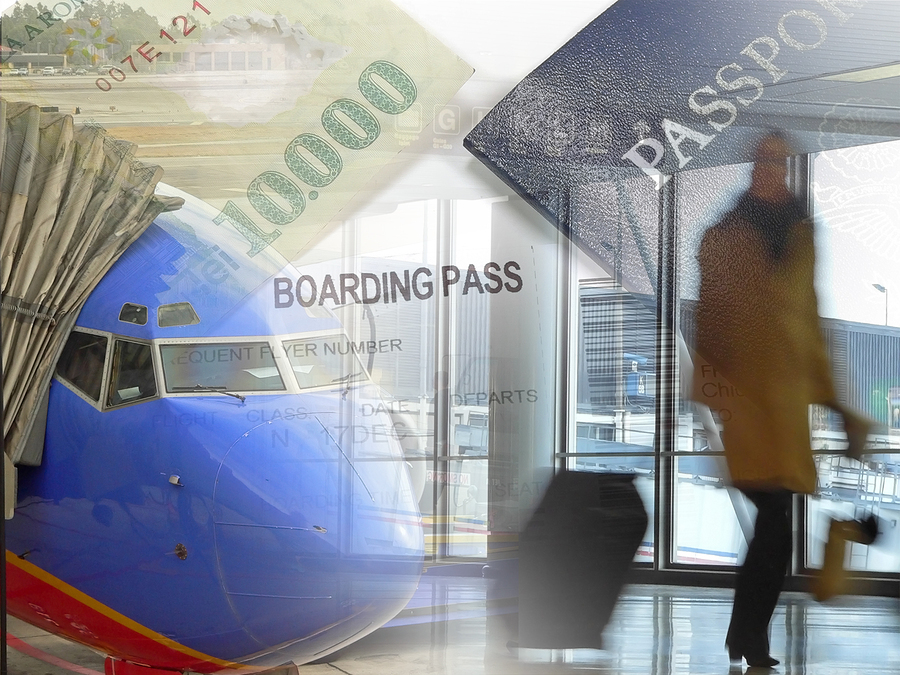A one-percent reduction in operating expenses brings the same financial benefit to a firm as a 10-percent rise in revenue. It's a statistic that has been bandied about for so many years that you might think it's not much more than a corporate myth.

With the attention of top executives at any firm focused mainly on (1) growing revenue and (2) controlling business expenses, the use of software as a service (SaaS) has become popular to make both endeavors more comprehensive and transparent. The appeal is clear for middle market companies, where executives are likely not willing to spend a large amount up front for licensed, fully customized solutions, but on the expense side in particular, the calculation for balancing the use of SaaS with a human intermediary in certain areas is more complex than it might appear at first.
Choose the right software
The benefits of a comprehensive, automated expense-management system across payroll admin, general procurement, and travel and entertainment (T&E) are clear. Bill Vergantino, president/CEO of ExpenseWatch.com, summed up these benefits well in a recent online article. SaaS solutions for controlling business expenses have mushroomed over the past few years. Besides ExpenseWatch, programs from Replicon, ExpenseVisor, Concur, and Expensify are popular. For midsized firms that use SAP enterprise software, there is the Travel onDemand component that, like the stand-alone products, allows for travel planning in addition to expense reporting and tracking.
It is the travel-planning task, however, where the decision to use only a technological solution is not so straightforward. The human element — when employees' motivations do not align with the company's motivations — is what drives inefficiencies in travel and entertainment (T&E) spending in particular. As a result, T&E costs are the second-most difficult operating expense line for businesses to control, according to Forrester Research. Furthermore, these costs often represent up to 10 percent of a midsized firm's total expenses.
Keep a personal touch
A combination of software and a real person could bring about a more efficient process than the technology alone. There are a few ways to enact travel planning with a human element that conforms to the company's purchasing policies; captures expenses properly; and provides timely reimbursement to employees:
- Hire someone with travel-agency experience as a full-time employee, on site or remotely, to handle every travel request of employees. Train the agent in the firm's travel policies, and grant access to your enterprise software system at the accounts-payable level, as well as whichever expense management software your firm chooses. The pros: The new employee can ensure near-perfect compliance to company purchasing policy and feed the expense-reporting system more accurately; the employee can analyze company travel patterns over time to secure volume agreements with preferred vendors; administrative costs are contained versus having employees book their own travel or use an outside agency that charges per encounter. The cons: There's likely no 24/7 access for employees when they must make last-minute changes to transportation or lodging for a trip, resulting in occasional higher costs from doing it themselves.
- Outsource to a travel agency. Again, compliance with the firm's travel policies can be ensured if agents are given specific training and the agency can be connected with the firm's expense-reporting system (but perhaps not at the level of internal A/P personnel.) The pros: 24/7 access for employees to make changes that stay within policy or minimize additional costs; strong ability to leverage volume discounts with preferred vendors. The cons: Fees are usually charged per employee encounter, so a middle market firm with significant travel volume would have to negotiate wisely.
In both scenarios, having a human element in the process keeps employees aware that there is monitoring of their spending behavior aside from simply staying within policy (i.e., expense-report padding). It also allows employees to work through unusual circumstances (where they must book outside of policy or make last-minute changes) without involving the CFO in each situation.
Take the first step
In any area of operation, the first step to controlling business expenses is to audit the present system to find the benefits and flaws, not just with data, but also with employee perceptions. Once that's done, a middle market firm can decide whether payroll admin, general procurement, T&E, or another area of expense requires changes involving employee training, upgraded technology, additional personnel — or all of the above.
Rob Carey is an NCMM contributor and a features writer who has focused on the business-to-business niche since 1992. He spent his first 15 years at Nielsen Business Media, rising from editorial intern to editorial director. Since then, he has been the principal of New York-based Meetings & Hospitality Insight, working with large hospitality brands in addition to various media outlets. Circle him on Google+.